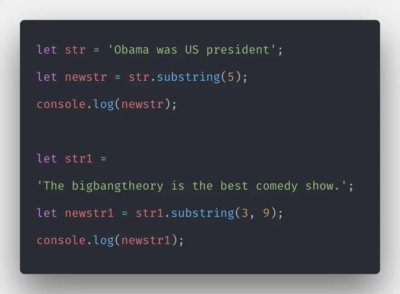
Lucky Numbers (LNs) is a mesmerizing series of integers created by omitting particular numerals from the ongoing flow of integers. This begins by leaving out alternate numerals, followed by every third numeral, then every fourth, and so forth. The numerals that remain within the series are termed as LNs.
We will explore two different approaches to reveal the first N happy numbers and develop a program to determine whether a given number is a happy number or not.
What is the lucky number in a matrix in Java?
In the context of a matrix in Java, a “lucky number” is not a standard or predefined concept, as it is in numerology or some other areas. The concept of a “lucky number” in a matrix is not a universally recognized or standardized term in programming.
If someone mentions a “lucky number” in a Java matrix, they are most likely using this term in a specific, context-dependent sense that should be defined within that context. It could be a number with special significance in a particular algorithm or problem-solving scenario related to matrices.
To understand the meaning of a “lucky number” in a matrix in a specific context, you would need to refer to the documentation, comments, or the context of the code or problem statement where this term is used. It is not a widely accepted or standard term in the field of Java programming for matrices.
What Is a Lucky Number in Programming?
To find LNs, a common approach is to take a sequence of natural numbers (1, 2, 3, 4, 5, …) and systematically remove certain digits:
- The most common method for generating LNs involves removing every second digit, then every third digit, then every fourth digit, and so on until you have a sequence of digits left. These remaining numbers are called “lucky numbers.”;
- For example, starting with the sequence (1, 2, 3, 4, 5, 6, 7, 8, 9, 10, …), after removing every second digit, we get (1, 3, 5, 7, 9, 11, …). Then, by removing every third digit, we have (1, 3, 7, 9, 13, …), and the process continues;
- LNs possess interesting mathematical properties and can be the subject of programming tasks and exercises involving their efficient generation or determination using algorithms.
Discovering All Lucky Numbers Preceding a Given Number
Now that we understand the essence of LNs, we have already acquainted ourselves with LNs up to the number 20, which include 1, 3, 7, 13, and 19.
Let’s proceed to create a Java program that determines all LNs preceding a given number. To do this, we will use two different approaches.
Approach 1: Lucky Number Program In Java
In this initial approach, we use an array of size N and fill it with natural numbers from 1 to N. As the program runs, we systematically set every second element to 0, then move on to setting every third nonzero element to 0, and so on.
Here’s the complete program demonstrating this approach:
import java.util.Scanner;
public class LuckyNumbers {
public static void main(String[] args) {
Scanner sc = new Scanner(System.in);
System.out.println("Enter a number: ");
int num = sc.nextInt();
int arr[] = new int[num];
for (int i = 0; i < num; i++) {
arr[i] = i + 1;
}
for (int step = 2; step < num / 2; step++) {
int count = 0;
for (int i = 0; i < num; i++) {
if (arr[i] != 0) {
count++;
}
if (count % step == 0) {
arr[i] = 0;
}
}
}
for (int i = 0; i < arr.length; i++) {
if (arr[i] != 0) {
System.out.print(arr[i] + " ");
}
}
System.out.println();
sc.close();
}
}Output:
$ java LuckyNumbers
Enter a number: 20
1 3 7 9 13 15 19
Enter a number: 50
1 3 7 13 19 27 39 49
Enter a number: 100
1 3 7 13 19 27 39 49 63 79 91Code Explanation:
- The program first accepts user input for the desired number;
- Then, it creates an array of size N and fills it with natural numbers from 1 to N;
- A loop iterates from 2 to N/2, serving as the number deletion step;
- Within this loop, a variable count is initialized to 0, which keeps track of non-zero elements;
- Another loop iterates through the array, setting elements to 0 based on the step value;
- Finally, the program prints the non-zero elements in the array.
Approach 2: Lucky Number Program In Java
Contrary to the former method where numerals were substituted by zero, in this distinct technique, we move the numerals toward the left side. The displacement begins from positions designated as 2n, then advances to locations tagged as 3n, and continues in a similar fashion. Below is the full code showcasing this unique strategy:
import java.util.Scanner;
public class LuckyNumbers {
public static void main(String[] args) {
Scanner sc = new Scanner(System.in);
int num = sc.nextInt();
int arr[] = new int[num];
for (int i = 0; i < num; i++) {
arr[i] = i + 1;
}
int step = 1;
while (step < num) {
for (int i = step; i < num; i += step) {
for (int j = i; j < num - 1; j++) {
arr[j] = arr[j + 1];
}
num--;
}
step++;
}
for (int i = 0; i < num; i++) {
System.out.print(arr[i] + " ");
}
System.out.println();
sc.close();
}
}These programs allow you to find LNs preceding a given number using different approaches.
Output:
$ java LuckyNumbers
Enter a number: 10
1 3 7
Enter a number: 100
1 3 7 13 19 27 39 49 63 79 91
vbnetExplanation of the Code:
- The program accepts user input for the desired number;
- An array of size N is initialized and populated with natural numbers from 1 to N;
- We use a step variable to track the shift position;
- While the step is less than the given number, we shift elements to the left, effectively removing numbers;
- Finally, the program prints the remaining LNs. Verifying Number Luckiness with a Java Program Finding LNs is one thing, but determining whether a number is fortunate or not presents a unique challenge. Let’s explore an approach to discern the luckiness of a number. Consider the number 9 and the following series: 1, 2, 3, 4, 5, 6, 7
Explanation of the Code:
- The program starts by taking input from the user for the desired number;
- Next, it creates an array of size N and fills it with natural numbers from 1 to N;
- In a loop, it iterates from 2 to N/2, serving as the step for removing numbers;
- Within this loop, a variable count is initialized to 0, which keeps track of non-zero elements;
- Another loop iterates through the array, setting elements to 0 based on the step value;
- Finally, the program prints the non-zero elements of the array.
Approach 2: Program for Determining LNs in Java
In the previous approach, we replaced numbers with 0. However, in this alternative approach, we shift numbers to the left. Initially, we shift from the 2n position, then from the 3n position, and so on.
Here’s the complete program demonstrating this approach:
import java.util.Scanner;
public class LuckyNumbers {
public static void main(String[] args) {
Scanner sc = new Scanner(System.in);
int num = sc.nextInt();
// Initialize an array
int arr[] = new int[num];
for (int i = 0; i < num; i++) {
arr[i] = i + 1;
}
int step = 1;
while (step < num) {
for (int i = step; i < num; i += step) {
for (int j = i; j < num - 1; j++) {
arr[j] = arr[j + 1];
}
num--;
}
step++;
}
// Print lucky numbers
for (int i = 0; i < num; i++) {
System.out.print(arr[i] + " ");
}
System.out.println();
// Close scanner
sc.close();
}
}Output:
$ java LuckyNumbers
Enter a number: 10
1 3 7
Enter a number: 100
1 3 7 13 19 27 39 49 63 79 91Explanation of the Code:
- The program takes user input for the desired number;
- An array of size N is initialized and filled with natural numbers from 1 to N;
- A variable ‘step’ is used to track the shift position;
- While ‘step’ is less than the given number, elements are shifted to the left, effectively removing numbers;
- Finally, the program prints the remaining LNs.
Conclusion
In the world of LNs and Java programming, we embarked on a fascinating journey into the realm of mathematics and algorithms. We learned how to find LNs using two different approaches, enriching our programming skills along the way.
Exploring “Lucky Numbers in Java” deepens programming skills, beneficial for algorithmic efficiency and indirectly valuable for SEO. Discover its relevance to link-building KPIs.

From systematically sieving numbers to rearranging elements in arrays, we honed our problem-solving skills. Additionally, we delved into the intriguing realm of numerology, where personal LNs can hold special significance for individuals.
While LNs in programming may not impact your everyday life as they do superstitions, they showcase the elegant intersection of mathematics and computer science. The ability to identify and work with these numbers demonstrates the power and versatility of Java programming.
As you continue to refine your programming skills, remember that luck often favors the prepared mind. Whether you’re tackling complex algorithms or unraveling the mysteries of numbers, your determination and understanding will lead you to success. So keep coding, keep learning, and perhaps your own LNs will guide you to even greater achievements in the world of programming.
Now you’re ready to tackle the next programming challenges, whether it’s solving factorials in Python or deciphering the Fibonacci sequence. The coding world awaits you, and with each problem solved, you’re one step closer to becoming a true programming master. Happy coding!







